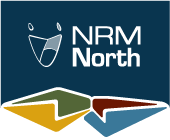Stories of NRM
In 2021 the Federal Government launched a pilot, the Carbon + Biodiversity program, to incentivise participation in carbon farming projects with additional biodiversity benefits.
In 2021 the Federal Government launched a pilot, the Carbon + Biodiversity program, to incentivise participation in carbon farming projects with additional biodiversity benefits.
“Farmers are a diverse lot. You get them in all shapes and sizes and they are motivated by many different things … What you need is a bit of a bistro, a smorgasbord of offerings in this space from pure carbon, to pure biodiversity, with multiple offerings in between.”
The program was designed in collaboration with researchers from the Australian National University (ANU), and involved the Australian Government partnering with six regional natural resource management (NRM) organisations to support delivery of the project in the following regions: Burnett-Mary in Queensland, Central West in New South Wales, North Central in Victoria, NRM North in Tasmania, Eyre Peninsula in South Australia and South West in Western Australia.
Under the pilot, landholders who agreed to participate in a revegetation project using the Environmental Plantings Method under the Emissions Reduction Fund were eligible for both Australian Carbon Credit Unit payments, and an extra payment for meeting additional criteria for improved biodiversity outcomes. By adding an up-front payment to help support project establishment, it was anticipated that the extra money might both ‘get farmers over the line’ to establish a planting that would provide an additional source of farm income, and also lead to additional environmental benefits.
For the six regional NRM organisations involved, managing the delivery of the pilot included:
In Round 1 of the Carbon + Biodiversity pilot, there were 65 project offers with an average project size of around 38 ha, for a total of around 2,500 hectares of plantings across the six regions. While not all landholders are expected to progress to contract finalisation, the first round of the pilot demonstrated the significant potential of the project concept.
The pilot has since been extended to another six regions: Fitzroy Basin in Queensland; Riverina in New South Wales; Goulburn Broken in Victoria; Southern in Tasmania; Northern and Yorke in South Australia and South Coast in Western Australia. In response to an identified need for additional professional support, landholders that were made offers in Round 2 of the pilot have also been offered access to $10,000 to contribute to technical and legal advice on participating in a project under the pilot and Emissions Reduction Fund.
Partnering with regional NRM organisation on national carbon farming projects can:
Email: [email protected]



